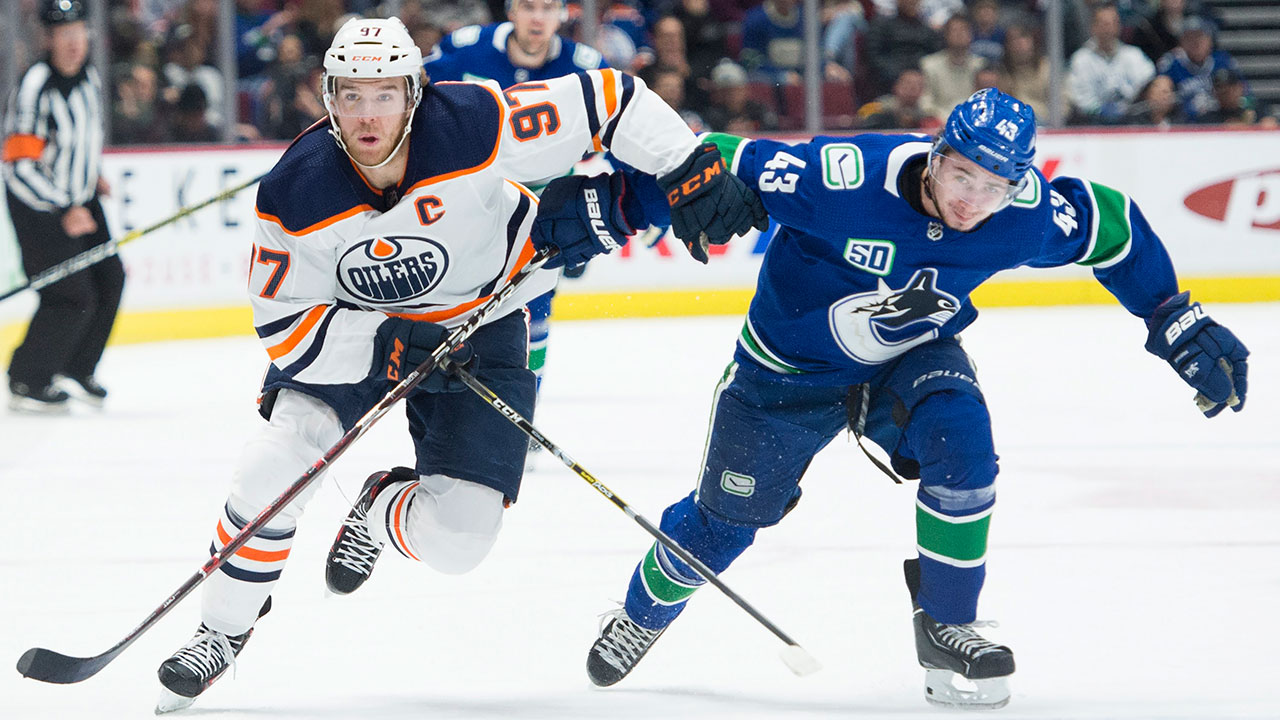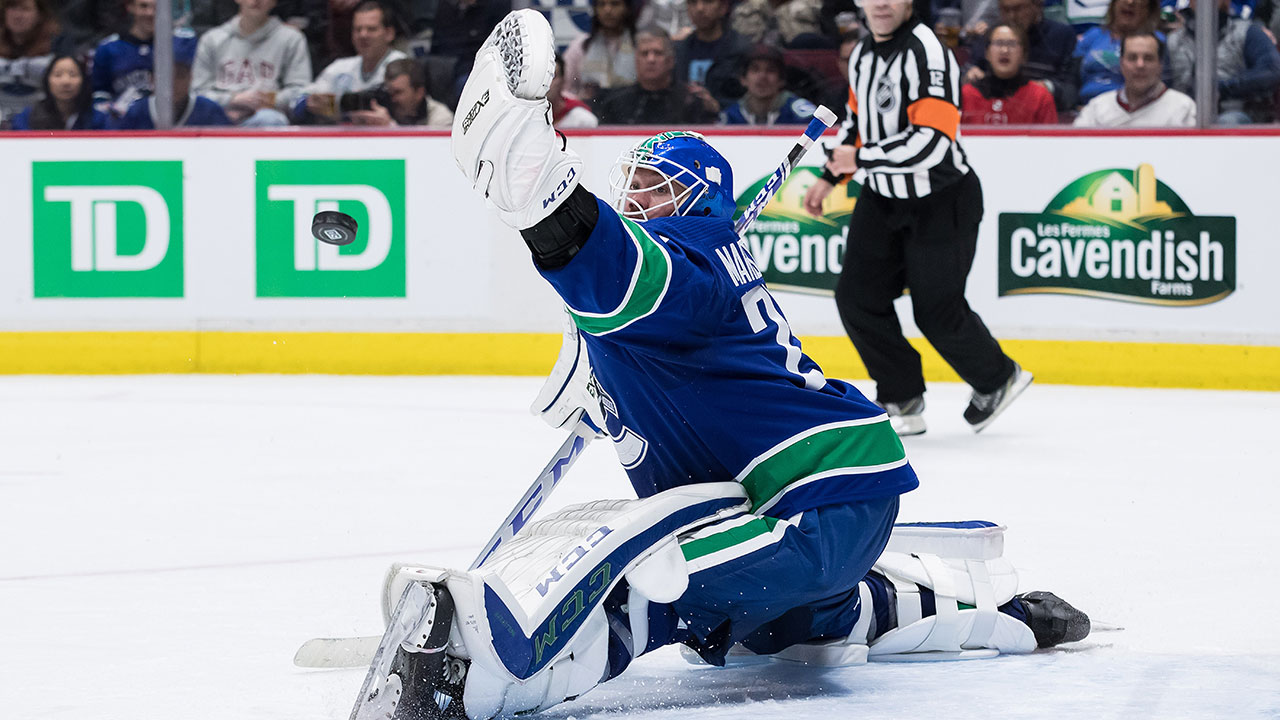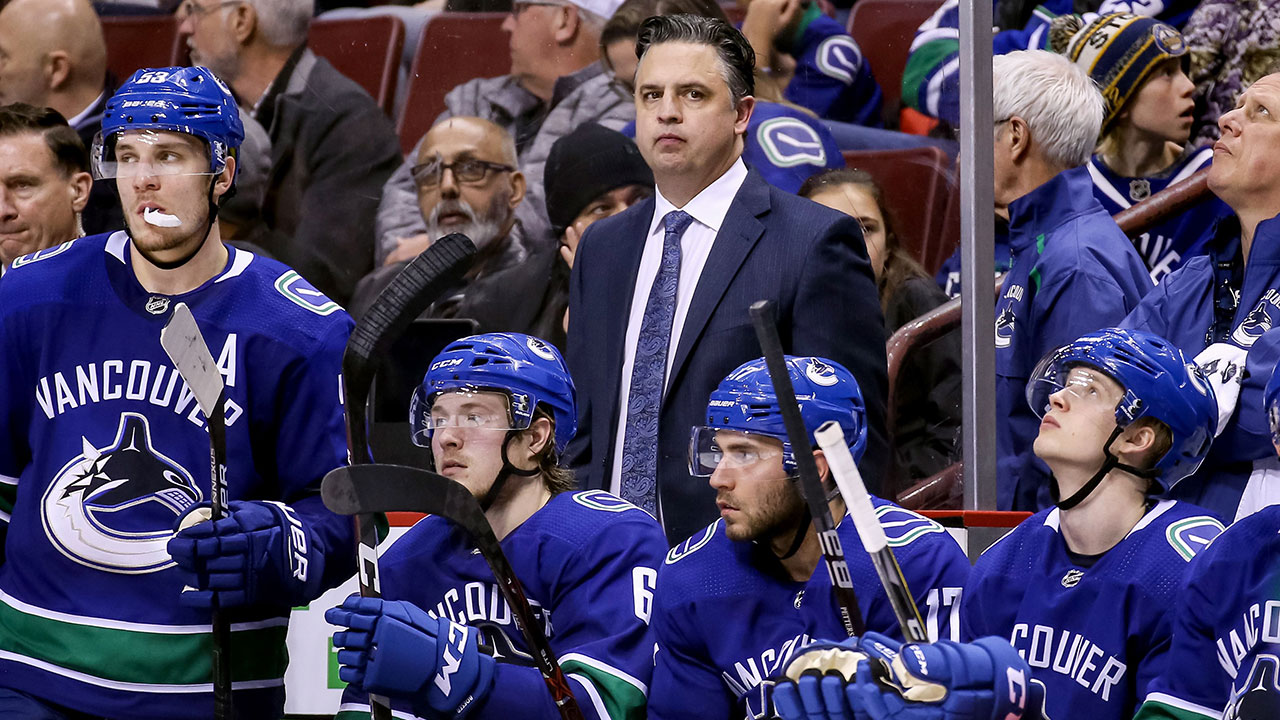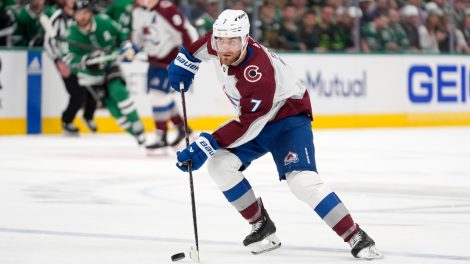VANCOUVER – The Vancouver Canucks are not only like Forrest Gump’s box of chocolates, but they also play like they’re jacked up on chocolate.
They’re all over the place, skating and attacking, making beautiful plays with the puck when they’re not turning it over and chasing back, scoring and getting scored against, blowing leads and demolishing deficits. Lately, they’ve also been winning and reached the 42-game mark with the fourth-best goal differential (+15) in the Western Conference.
There might be no team in the National Hockey League as fun to watch than the Canucks, who have enough brilliant young, inexperienced talent that games are an adventure. This whole winning thing takes practice, and the Canucks are learning as they go.
In the meantime, hold on. With 21-year-old Elias Pettersson driving the attack and 20-year-old Quinn Hughes leading the defence, who knows what the Canucks might do in the second half of the regular season.
[snippet id=4743501]
Team Record: 23-15-4, (6th in the Western Conference)
Goals for: 3.32 per game, (9th in NHL)
Goals against: 2.95 per game, (21st in NHL)
Power play: 26.1 per cent, (4th in NHL)
Penalty kill: 81.0 per cent, (15th in NHL)
Best surprise: Team’s offensive breakout
No team in the NHL scored fewer goals over the last four seasons than the Canucks, who averaged just 2.44 goals per game while finishing 25th, 26th, 29th and 29th in offence. With the maturation of Pettersson, Brock Boeser and Bo Horvat, and the additions of Hughes and experienced wingers J.T. Miller and Micheal Ferland, the Canucks were going to score more this season. But nobody expected them to be a top-10 offensive team already. Their power play alone pumped in 40 goals in the 41 games after scoring only 43 all of last season.
Not only is Vancouver’s “Lotto Line” of Boeser, Pettersson and Miller – Nos. 6-40-9 – one of the best in the NHL, but the Canucks have also had surprisingly strong and deep secondary scoring. Tanner Pearson and Jake Virtanen have 12 goals apiece, Josh Leivo had 19 points in 36 games before suffering a serious knee injury, and rookie Adam Gaudette 18 points in 31 games. Antoine Roussel, who missed the first 28 games due to major knee surgery last season, had four goals in 13 games and should make an impact in the second half. In 41 games, the Canucks have scored five or more goals 16 times.
[snippet id=4167285]
Biggest disappointment: Injuries to Ferland, Sutter
Ferland signed as a free agent to play in the top six and potentially contribute 20-plus goals, was restricted by a concussion to just 14 first-half games. He has one goal. Another important player, third-line centre Brandon Sutter, got off to a strong start with five goals in 14 games before chronic groin-abdominal problems returned. After missing 56 games last season, Sutter missed another 19 in the first half and remains out of the lineup.
At one stage in November, Vancouver was without five of their bottom-six forwards, which made the Canucks a lighter, easier team to play against and contributed to a 3-7-1 slide.

Forwards
The Canucks have enjoyed primary and secondary scoring (see above), although the torrid pace of the power play has skewed offensive totals on a team that has been average at even strength.
But when healthy, the Canucks have an excellent mix of skill, speed and power. Like the Vegas Golden Knights and St. Louis Blues, Vancouver is a heavy team that can wear opponents down when the puck is kept in the offensive zone. With Sutter and fourth-line centre Jay Beagle taking turns on the injured list, the Canucks have leaned heavily on centres Pettersson and Bo Horvat, who hit the midway mark with 12 goals and 33 points despite starting 58 per cent of his shifts in the defensive zone. Vancouver is second in the league with a faceoff win rate of 53.4 per cent.
Grade: B-plus

Defence
The blue-line group is stronger than it was last season with the summer acquisitions of Tyler Myers, Jordie Benn and Oscar Fantenberg. But the defence still yields a lot of quality scoring chances and struggles physically at times against the cycle. The absence for 10 games of top defenceman Alex Edler, whose health is always a barometer for Canucks’ success, also hurt the team.
But Hughes has been a game-changer offensively as a rookie, contributing 29 points and making Vancouver’s power play one of the league’s best. He has somehow exceeded the hype that had him regarded before this season as the most dynamic d-man in team history. He’ll be a rookie-of-the-year finalist if he stays healthy. Don’t take your eyes off him when Hughes is skating with the puck.
Grade: C-plus

Goaltending
Last year was starter Jacob Markstrom’s breakthrough season, and there was a question about whether he could match it in 2019-20 as the Canucks became more competitive. But the Swede has been even better, posting a .917 save rate despite facing high-quality scoring chances on a risk-taking team. Markstrom’s performances have included a 43-save, 1-0 shutout against the Carolina Hurricanes and 49-save, 3-2 win against the Los Angeles Kings. What makes his play even more impressive is that he coped throughout the fall with the terminal illness and subsequent death of his father, and twice took short personal leaves to fly home to Sweden.
Rookie Thatcher Demko, one of the Canucks’ best prospects, had an outstanding October, cooled in November and then suffered a concussion in December that kept him out for two weeks. But he is 8-4-1 in 13 starts and his .907 save percentage is just a smidge below league average. It looks like he could be a star one day, but his second concussion is as many seasons is a concern.
Grade: B-plus

Coaching
In his third NHL season, Canucks coach Travis Green has pressure to win for the first time. He has a clear vision for the players he likes and the direct, heavy style he wants his team to play, and has empowered his young stars to play freely and with confidence. The drawback has been a lot of high-risk hockey that has led to quality scoring chances for the opposition and a pile of blown leads. But Green’s players like him, the young guys are getting better, and the coaching staff deserves credit for a fourth-ranked power play and penalty killing that was much better than its current ranking of 15th when it had its full arsenal of penalty-killing forwards.
Grade: B-minus
[relatedlinks]









